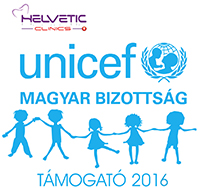Gnathological Treatment – Helvetic Dental Clinics
“Gnathological Treatment” is a special field of dentistry sometimes also called bite correction or occlusion. The dentist examines the occlusion of the upper and lower jaw, and identifies how the upper and lower teeth fit with each other as well as how the joints and muscles of the jaws work. Gnathology is referred to as the science of chewing because it examines and treats the bite organs (the mandible, teeth, jaws, muscles, etc.). It studies the relations between jaws, between teeth in occlusion and articulation. Occlusion includes every physiological contact between the upper and lower teeth, while articulation denotes the movements that the lower jaw makes while functioning (chewing, talking, swallowing…).
Malocclusion can cause a number of health problems such as headaches, facial pain, and even insomnia. Typically, patients don’t even realize this problem and often the dentist is not able to detect bad occlusion through a normal examination. If teeth, crowns and dentures do not fit perfectly in the occlusal position, they wear out over time or move from their original position. As a result, other symptoms related to this dysfunction may occur, such as:
- Teeth attrition – a fast wear down of tooth substances
- Tooth fracture
- Periodontitis – bone resorption, gingiva recession, pockets, teeth wobbling and, finally, teeth loss
- Pulpitis – inflammation of the dental pulp
- Necrosis – lapse of pulp
- Headaches and neck pain
- Ears ache
- Loss of concentration
- Fatigue of chewing muscles
- Stupor of a part of the face
- Morning stiffness and jaw fatigue

During the Gnathological Treatment, the movement of the jaw is recorded. This treatment is completely painless, lasts only an hour during which the patient is asked to perform certain movements with his or her mouth, which are analyzed in 3 dimensions. With the help of an articulator, either Arcus Digma 1 or Arcus Digma 2, we obtain a precise record of the facial arc (called an axiograph) and register the major points in order to create the most tailored prosthetics possible (crowns, bridges and dentures). During their preparation, our laboratory prepares a mould based on the impressions taken by the computer, which is returned to the dentist along with the information that was collected on the movement of the joints. The dentist then determines the position and movements of the temporomandibular joints and returns the information to the technician. Using this information, the laboratory is able to prepare the final prosthetics.
You Deserve the Best! Helvetic Dental Clinics, Best Dentists & Dental Care Abroad


















